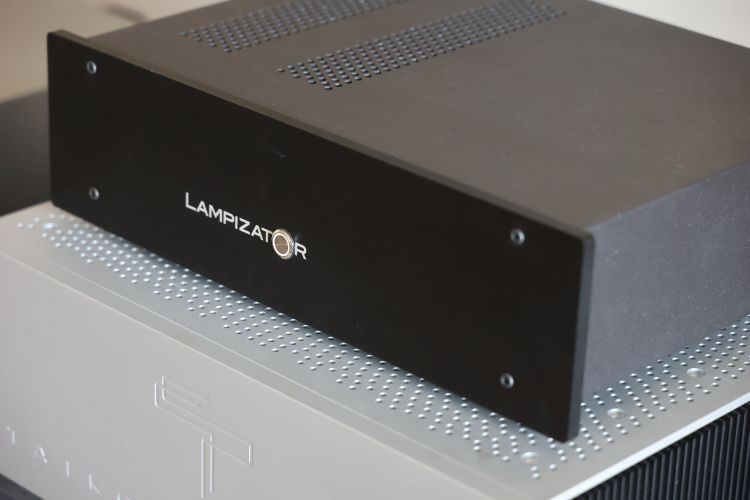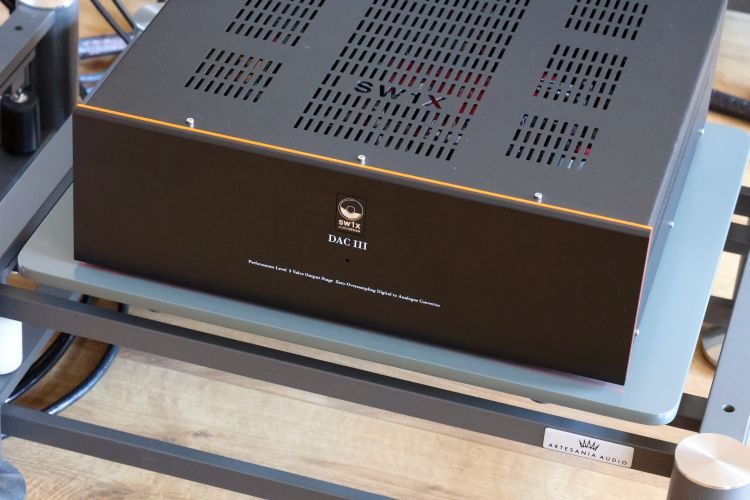Aqua Formula xHD v2 Output Board upgrade
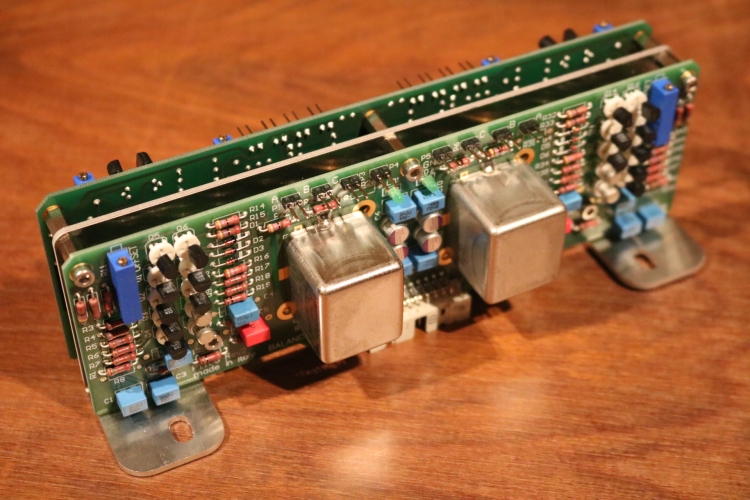
Output board review sample supplied by Aqua
Lejonklou Sagatun preamp review sample supplied by Hexagon Audio
Output Board v2 retail price in the NL: 995 euro ex shipping including 21% VAT
Who says that electronics circuits are for nerds? I mean, look at this board! Isn’t it a work of art? It’s like the architecture of several building blocks, viewed from a distance. Actually, it’s like two similar blocks back-to-back bolted onto each other.
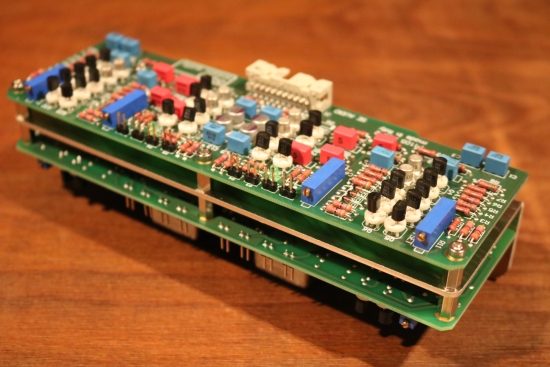
There are separate boards for the Single-Ended outputs and the Balanced outputs where the latter uses two output transformers. Because the Lejonklou Sagatun preamp (review forthcoming) only has cinch inputs, I will first assess the sound using the cinch outputs and I will get to the XLR connections further below.
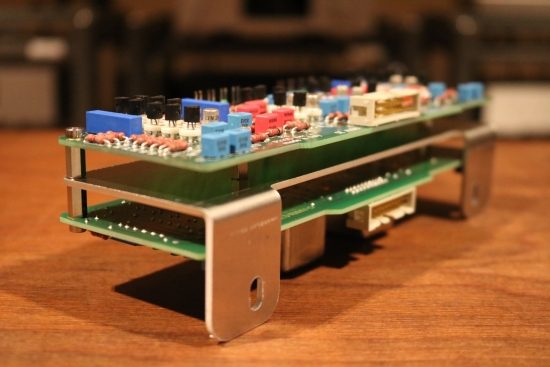
The box in which the new board came is labeled Formula UP11-A2 update, Analog boards Rev. 2. The serial number is 1360.
System Context
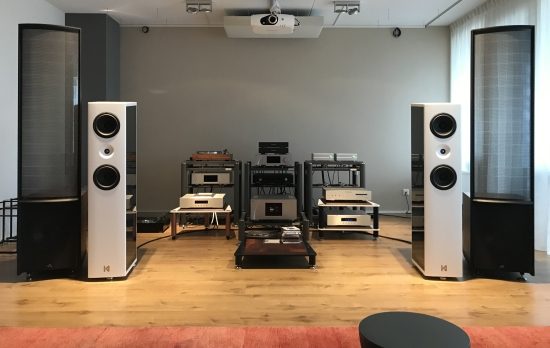
Normally, the Formula xHD is used with an Artesania Exoteryc rack. For this occasion, it was used on an Artesania Modular rack. As it turns out, the DAC sounds fabulous on this rack and arguably even better than on the Exoteryc rack. For this review, I used the Kroma Audio Carmen loudspeakers with the CH Precision A1.5 power amp. The analog preamp for this occasion is the Lejonklou Sagatun Mono dual-mono preamp as provided for a separate review by Marco Oudheusden of Hexagon Audio.
All the components are powered with a Belden power cable with Bals schuko and IeGO C-004 IEC connector. The speaker cables are the Jorma Trinity.
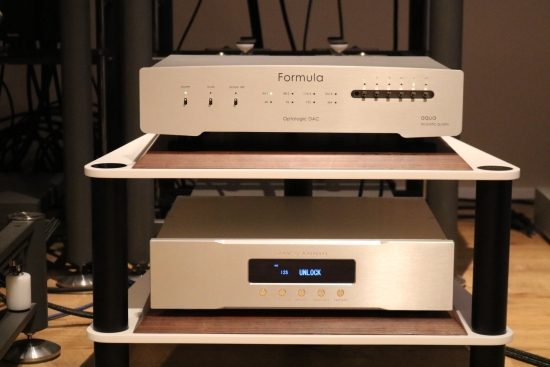
During the swaps, the Aqua DAC was listened to on an Artesania Modular rack with neoprene pads between the Aqua’s feet to protect the rack’s Panzerholz top layer from stains.
Modularity
Aqua is one of the few manufacturers that not only build their products in a modular fashion but also actually provide updates that can be installed very easily. The xHD upgrade for the Formula DAC and the Optologic upgrade for the La Scala DAC are recent points in case and now, the Output Board V2 for the Formula xHD.
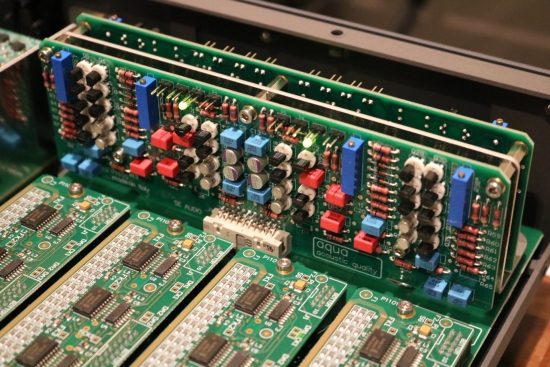
Above: V1 board still installed, below: board removed with the removal of only 2 screws.
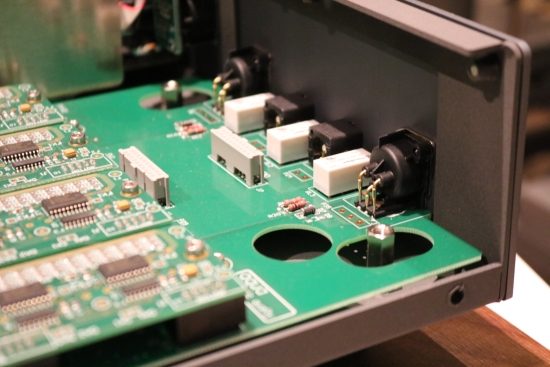
Where are the differences?
At first glance, the new board looks the same as the old one. Comparing it more closely, it does not just look a bit like the other, it seems to be an EXACT match! The same diodes, the same transistors, and the same resistors and all these components are in precisely the same locations.
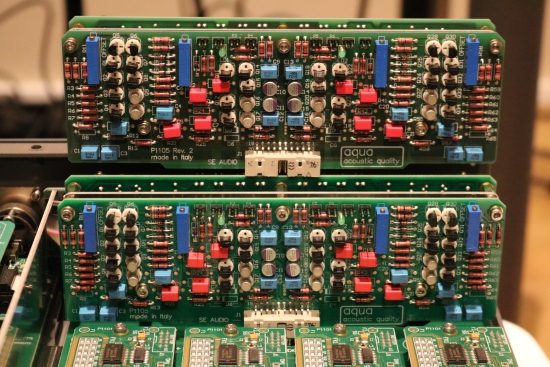
Yet, the new board immediately sounds different: tauter, more direct, more energetic and more alive. For example, staccato bass-drum parts are easier to follow and snare drum whacks are more vibrant and have more immediacy and the V2 board provides all this while retaining the DAC’s core qualities such as its superb refinement and its immense transparency. In fact, I’d say that even in these territories, the DAC has turned it up a notch. It’s as if a veil has been lifted. Oh dear, I said it. The most over-used term in the history of audio journalism. But I can’t help it if it’s true!
Unbelievable? I thought so too. So, I swapped back, and forth, and back, and forth. But there is no way around it: the v2 board is clearly better. But how is that possible when it seems to contain the very same components in the exact same locations? The thing is: appearances are misleading and the components only look to be the same.
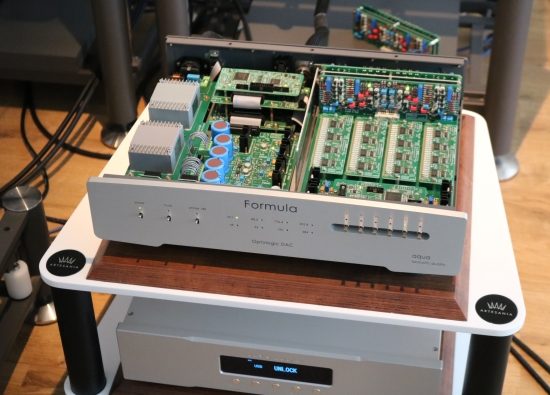
The Devil is in the Details
Upon very close inspection, I did notice a different value resistor on the left and right and a different value on the round capacitors in the middle of the board. Also, the board has a different coating on it: darker and less shiny than that on the V1 board. Surely, that is not all there is to it? Looking on the Aqua website, all that is mentioned is that the new board implements new output transformers (that I have not even listened to yet), specially selected super-fast active components (aha!) and improved polarization of the circuitry. Still not really content with this explanation, I asked Cristian Anelli for more info. He added that the company invested in new test instruments and procedures for the selection of active components and other important details that matter for the quality of the sound. While that doesn’t say much, it also says it all. With a product that is already as good as the Formula xHD, a meticulous selection of components clearly provides very worthwhile results.
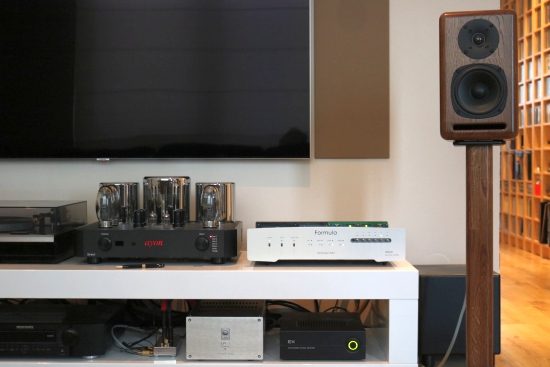
Balanced outputs
To also assess the Formula xHD’s balanced outputs, I connected the DAC to the Ayon Spirit III in my secondary system. For its high resolution and very nuanced sound, I used the Final Touch Audio Ganymede XLR interlinks. The power cable for the Formula xHD, finally, was the Vermouth Reference that had already proven to work very well with this DAC in this system.
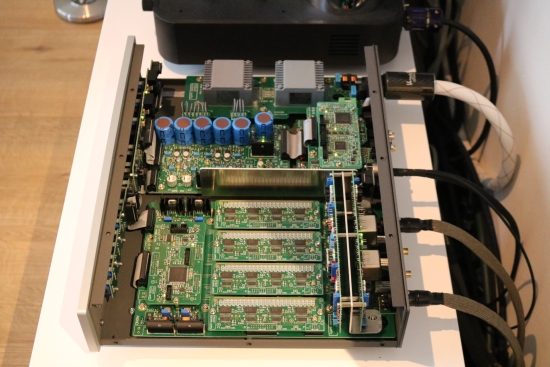
It is worth noting that I had the DAC switched on and playing music for a couple of days using the V2 board prior to listening in this system. In this system, as in the main system, the differences between the V1 and V2 board were immediately evident and fully in line with those heard in the main system using the DAC’s cinch outputs. If anything, the difference in the bass was slightly larger than with the cinch outputs, the new transformers apparently also chipping in to provide more solid bass.
Getting right down to it
Audio journalists are known to exaggerate. So, precisely how big are the differences between the V1 board and the V2 board? Well, let me put it this way. When going back to the V1 board, I still hear why I think the Formula xHD is such a great DAC. With that board, it still has the most refined and most highly resolving sound that I have heard from any DAC. But every now and then, I hear another DAC that, while certainly not performing on the same level as the Formula xHD’s, offers a more lively or more impactful sound. But also within the Aqua lineup, the La Scala DAC in its latest MkII incarnation offers a vibrancy that is less present in the Formula xHD. It’s often as if one has to choose between refinement and all-out enthusiasm. And in those moments, I have occasionally wished that the Formula xHD could step it up a notch.
So, how large are the differences that the new V2 board brings? They are so large that they restore the ranking and reaffirm the Formula xHD’s position as the King of the Crop. Now, there is no need to choose between power or refinement as the Formula xHD does it both. Not only is it deservedly the reference component in the Aqua lineup but, bar a few mega-buck DACs at triple cost or more, the Formula xHD remains the very best DAC that I have used.
Conclusion
With the V2 output board, the Formula xHD’s position as the King of the Crop is reaffirmed. Not only is the Formula xHD the reference component in the Aqua lineup but also in general, I feel that it remains one of the absolute best DACs that exist today.
There is no need to send the unit back to the factory, the upgrade can be done by your local dealer.
External Links
Distributor for the NL/Belgium: Hexagon Audio
Manufacturer’s website: aquahifi.com






